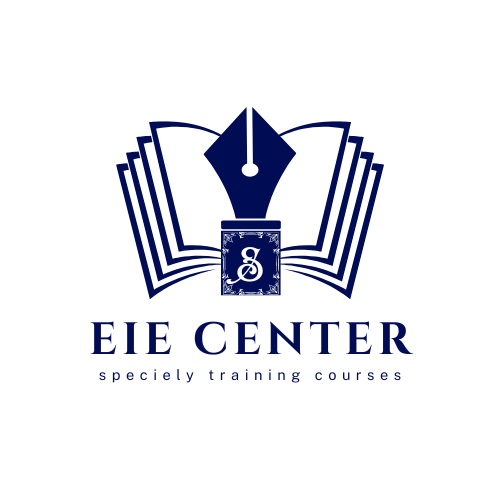Leadership Best Practices: Enhancing Leadership for Peak Performance

About Course
Best Practices are chosen by world-class leaders who have used their influence to change their environment – government or business – for good or to improve their organization’s success ratio. Organizational development literature contains various definitions and descriptions of leadership, including leadership best practices and leadership development best practices.
This program establishes what some business leaders do to improve their organization’s position through effective leadership. We will analyze the leadership practices of business leaders whose techniques have proven to work in the local and global markets. Each practice will include a way in which any leader in the market can apply the practices learned to improve their environment.
Besides, case studies are delivered through videos with hands-on activity and team case questions to provide further insight into enhancing leadership skills and performance leadership and making these practices work in your environment. In the ever-evolving landscape of organizational leadership, enhancing leadership skills is a benefit and a necessity for fostering a culture of continuous improvement and peak performance.
Attendees of this course will delve into leadership best practices, drawing from real-world examples and actionable strategies to empower individuals to achieve enhanced leadership roles within their respective organizations. With a dedication to the cultivation of foundational and advanced competencies, this course is a stepping stone to understanding why leadership skills should be enhanced and how to implement and sustain these elevated nuances of influential leadership.
Course Objectives
At the end of this course, the participants will be able to:
- Determine the best practices of leaders through history and how to apply them today.
- Articulate an understanding of what leadership means in their business.
- Explain their leadership capabilities and areas for personal development.
- Determine their role as an effective leader in any organization.
- Describe a change management model for management and the process of planning, communicating, and implementing change.
- Describe how to build and rebuild trust in an organization.
- Use personal influence and develop political savvy to network and influence people effectively.
- Develop strategies for creating a positive work environment that fosters leadership and a commitment to continuous improvement in others.
- Develop a Personal and Professional Vision and Communicate it to all stakeholders.
- Tap into an inner power to gain self-confidence and strength.
- Get the most productivity out of each constituent (worker or other).
- Delegate and Empower employees to maximize results and time management.
- Develop a culture that earns respect through new ideas and innovation, enhancing leadership skills.
Targeted Competencies
- Essential leadership skills
- Develop a Leadership Balance
- Build a following by building trust.
- Transforming people into productive followers
- Change management
- Planning for the future
- Lead by example
- Personal growth techniques
- Time management
- Command respect
Course Content
Unit 1: Leadership and Influence
- What do they mean?
- Leadership roles
- Self Appraisal: Leadership Behaviors
- Leadership from Within
- Paradigms that Guide Thinking
- Three Lenses of Leadership
Unit 2: How a Leader Leads From Within
- Ways to increase self-knowledge
- Self-reflection and Self-esteem
- Understand how you think.
- The character of a leader
- Creating an environment of leadership
- Authentic leaders are emotionally intelligent.
- Guide to Your Inner Leader
- Balance in mind, body, and spirit
Unit 3: The Role of a Change Leader
- Making the change transition
- Responses to change
- How to be resilient during change times
- Environmental change factors
- Change and leadership paradigms
- Communicating change
- The human side of change
Unit 4: How a Leader Builds Trust
- What is Trust?
- The benefits of a high-trust environment
- Trust reducing behaviors
- Restoring breached trust
- Building capacity for trust
- Personal influence and political savvy
- Negotiating agreement
Unit 5: How a Leader Fosters a Leadership Environment
- Mind and action focus
- The alliance mindset
- Developing the Win-Win Solution
- Tips on improving performance
- Strategies for Fostering Leadership
- Leadership knowledge check
- Essential leadership qualities
- Success questions
- Action steps to take
Unit 6: Creating and Implementing a Leadership Communication Strategy
- The Leader is a Visionary
- The Power of Creative Vision
- The Leaders’ Influence on Culture
- How a leader facilitates the path to a culture
- Implementing a leadership communication approach
- Models of best-run visionary companies
Unit 7: How Effective Leaders Control Their Inner Power
- Guide to Knowing Your Leadership Strengths
- How leaders use their emotional intelligence
- Understanding the leader base of power
- Understanding”Spiritual Capita””
- Leaders Influence on people – employees, peers, and senior managers.
- Managing your body and mind effectively
Unit 8: How a Leader Develops People
- Secrets to involve others
- Best practices of influential mentors and coaches
- The motivating Leader
- The need for achievement, power, and affiliation
- Expectancy theory and motivation
- How a leader creates an environment for self-motivation
Unit 9: How a Leader Uses Resources More Effectively
- Best practices to effectively delegate
- The benefits of delegation
- The barriers to delegation
- Delegation vs Empowerment
- Creating the climate for empowerment
- To Use goal setting, time management, planning, and prioritizing.
Unit 10: How a Leader Builds an Innovative Culture
- The Leader as a creative thinker
- Building a culture of innovation and new ideas
- Challenging self-imposed assumptions
- Putting best practices into practice
- Case study: Uniquely driven
- Building a personal leadership plan, including training programs to enhance leadership skills and organizational practices.
